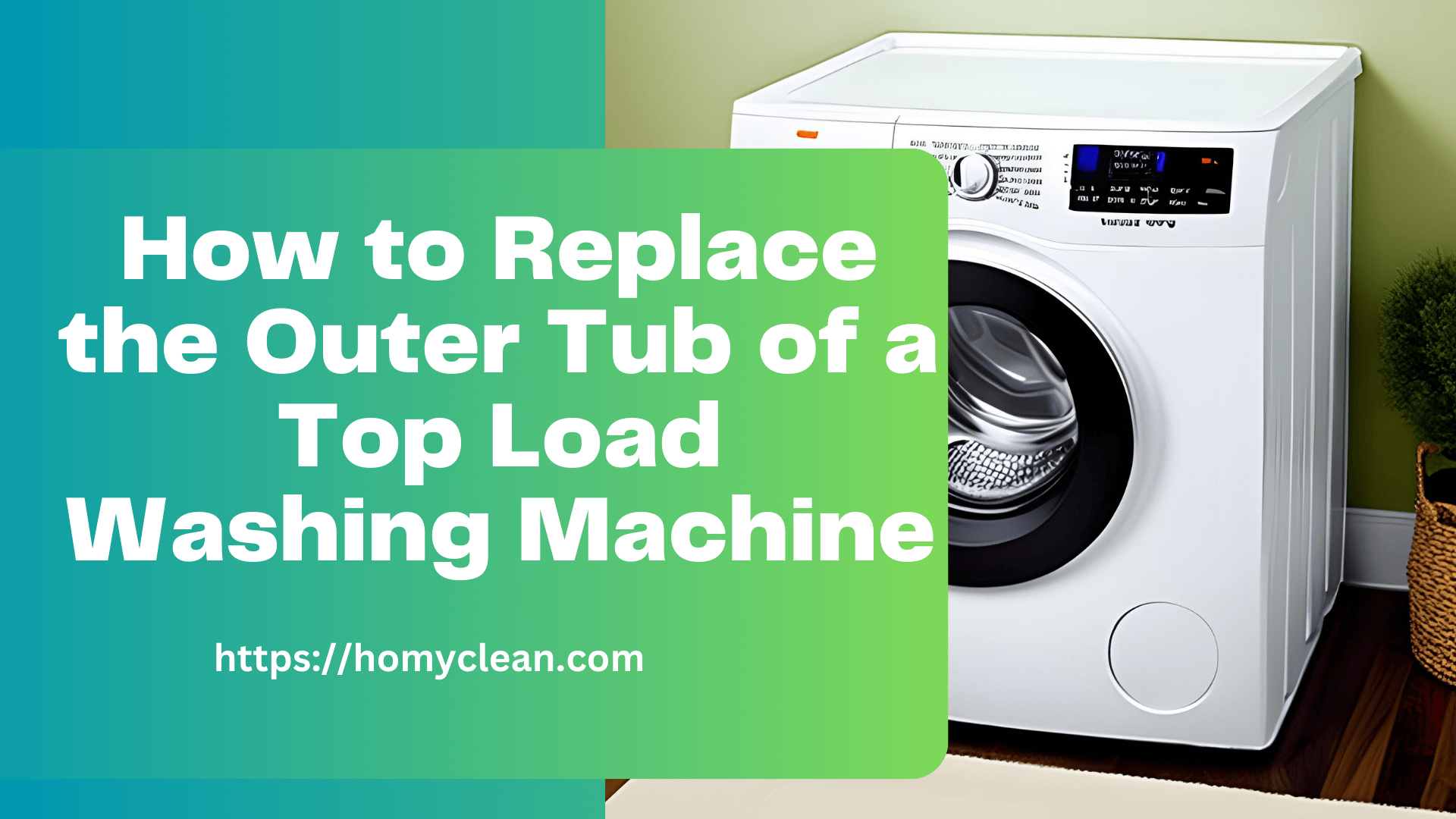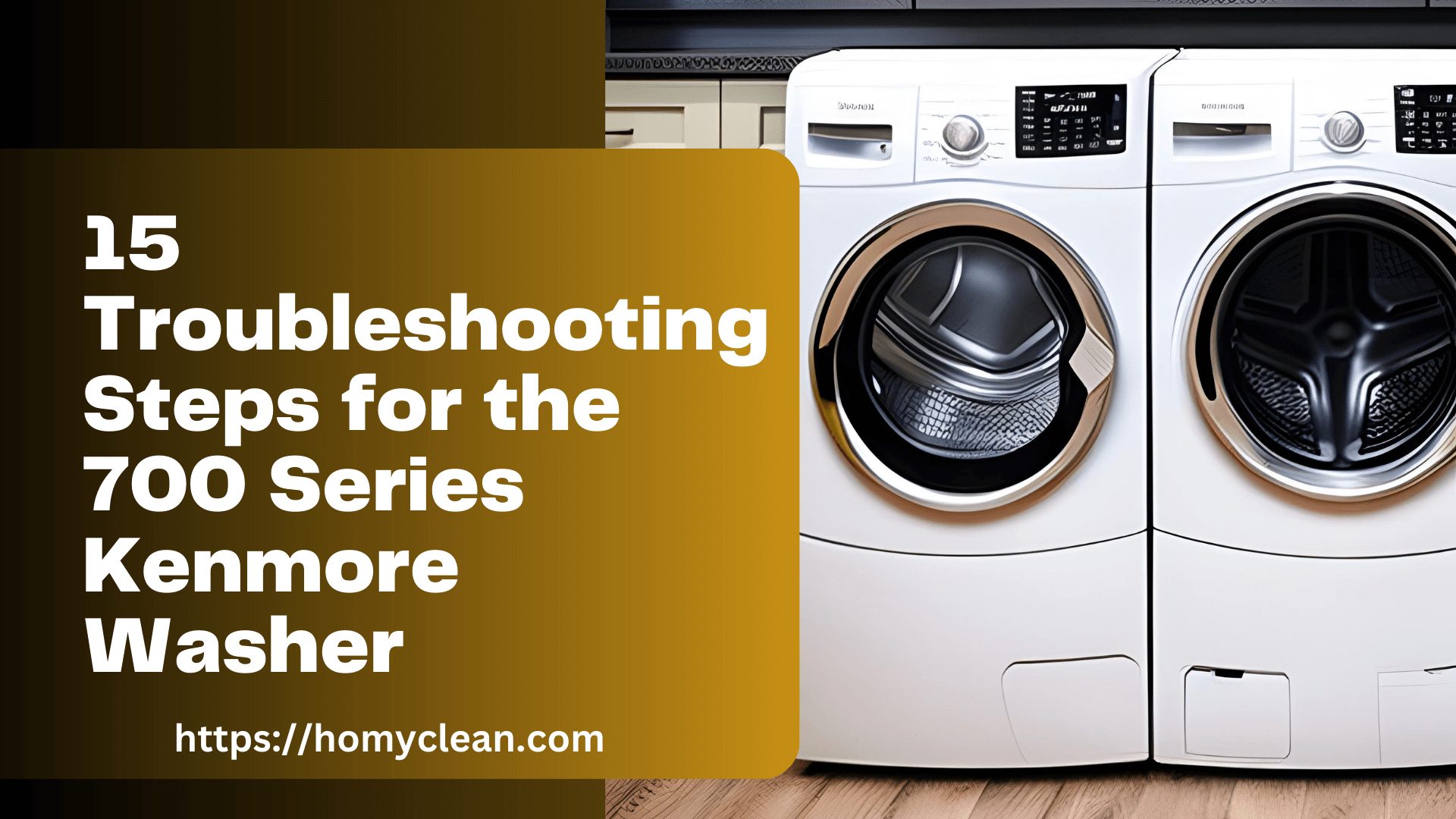Are you experiencing issues with your top-load washer’s outer tub? Over time, the outer tub of a washing machine can wear out or develop leaks, causing problems with its functionality. This article will guide you on how to replace the outer tub of a top load washing machine. By following these steps, you can restore your washer’s performance and ensure it continues to work efficiently. So, let’s dive into the details and get started!
The outer tub is an essential component of a top-load washer that holds the water during the wash and spin cycles. Over time, due to wear and tear or corrosion, the outer tub may develop cracks or leaks, resulting in water leakage or inefficient washing. In such cases, replacing the damaged outer tub is necessary to restore the washer’s functionality.
Signs of a Damaged Outer Tub of a Top Load Washing Machine
Before proceeding with the replacement process, it’s important to identify the signs indicating a damaged outer tub. Some common signs include:
- Water leakage during or after the wash cycle.
- Unusual noises during operation.
- Excessive vibration or movement of the washer.
- Rust or corrosion on the outer tub.
- Visible cracks or damage on the tub’s surface.
If you notice these signs, your washer’s outer tub likely requires replacement.
Preparing for the Replacement of the Outer Tub of a Top Load Washing Machine
Before you begin the replacement process, make sure to prepare adequately. Here are some essential steps to follow:
- Step 1: Turn off the washer and unplug it from the power source.
- Step 2: Shut off the water supply to the washer.
- Step 3: Clear the area around the washer for easy access.
- Step 4: Have a clean and spacious work area to disassemble and reassemble the washer.
Top Load Washing Machine Outer Tub Removal Tools and Materials
To replace the outer tub of your top-load washer, you will need the following tools and materials:
- Screwdriver set (Phillips and flathead)
- Pliers
- Wrench set
- Replacement outer tub
- Tub sealant
- Clean cloth or towel
- Safety gloves
Gather these tools and materials before starting the replacement process to ensure a smooth workflow.
8 Lifetime Steps How to Replace the Outer Tub of a Top Load Washing Machine
Now, let’s proceed with the step-by-step guide for replacing the outer tub of your top load washer.
Step 1: Safety Precautions for Removing the Outer Tub Washing Machine
The priority should always be safety. Turn off the water supply valves and unplug the washing machine from the power outlet.
Step 2: Disconnecting the Washer
To begin the replacement process, disconnect the washer from the power source and shut off the water supply. This will prevent any accidental starts or water leakage during the replacement.
Step 3: Removing the Cabinet and Control Panel
Your washing machine may contain an agitator or an impeller, depending on the model. Unscrew or unclip the cap or fabric softener dispenser on top of the agitator or impeller. Put it aside for now.
Step 4: Accessing the Outer Tub of the Top Load Washing Machine
Once the cabinet and control panel are removed, you will have clear access to the outer tub. Take a moment to inspect the tub for any visible damage or leaks.
Step 5: Detaching Components from the Outer Tub
Before removing the outer tub, you’ll need to detach various components connected to it. This may include hoses, suspension rods, wiring harnesses, and other attachments specific to your washer model. Carefully disconnect these components, keeping track of their placement for reassembly.
Step 6: Removing the Old Outer Tub of the Top Load Washing Machine
With the components detached, you can now remove the old outer tub. This may involve unscrewing retaining clips, brackets, or bolts that secure the tub in place. Lift the tub out of the washer carefully, ensuring not to damage any surrounding parts.
Step 7: Install the New Outer Tub of a Top Load Washing Machine
Take the new outer tub and position it correctly in the washer. Align it with the appropriate mounting points and secure it using the retaining clips, brackets, or bolts you removed earlier. Make sure the tub is properly seated and stable within the washer.
Step 8: Reassembling the Washer
Once the new outer tub is securely installed, it’s time to reassemble the washer. Follow the reverse order of the disassembly steps, ensuring all components are correctly reattached, and wiring harnesses are properly connected. Double-check that everything is in its rightful place before proceeding.
Relevant Topic: 8 Steps How to Remove the Inner Tub of a Top Load Washing Machine
How to Replace Your Whirlpool Washer Outer Tub 63849
- Unplug the washer and turn off the water supply.
- Remove the control panel and front panel to access the tub.
- Disconnect the hoses and wiring connected to the tub.
- Remove the drive belt and the drum suspension springs.
- Lift the drum assembly out of the washer.
- Remove the old outer tub by unscrewing the mounting bolts.
- Install the new outer tub and secure it with the mounting bolts.
- Reassemble the drum assembly, hoses, wiring, and panels.
- Plug in the washer and turn on the water supply to test the new outer tub.
Full Length Whirlpool Top Loader Tub Removal and Cleaning
- Unplug the washer from the power source and turn off the water supply.
- Remove any clothes or items from the washer and open the lid.
- Use a screwdriver or a putty knife to release the spring clips securing the top panel to the washer’s cabinet.
- Lift the top panel and prop it up to provide access to the tub.
- Disconnect the wiring harness and any other attachments connected to the tub.
- Locate the agitator in the center of the tub and remove it by unscrewing the bolt or using a gentle rocking motion.
- Remove the inner tub by lifting it out of the washer.
- Now, you can access the outer tub. Disconnect any hoses or wiring connected to it.
- Depending on the specific model, mounting bolts may secure the outer tub to the washer’s frame. Unscrew these bolts and carefully lift out the outer tub.
- Clean the tub thoroughly using a mild detergent, warm water, and a soft brush. Pay attention to any dirt, grime, or residue on the tub surface.
- Rinse the tub with clean water to remove any cleaning solution.
- Once the tub is clean and dry, place the outer tub back into the washer and secure it with the mounting bolts if applicable.
- Reconnect any hoses or wiring to the outer tub.
- Reinstall the inner tub and secure it properly.
- Place the agitator back into the center of the tub and secure it with the bolt.
- Reconnect the wiring harness and any other attachments to the tub.
- Lower the top panel of the washer and make sure it locks into place.
- Plug in the washer and turn on the water supply.
- Test the washer to ensure that the tub is functioning properly and there are no leaks.
- Finally, close the lid and you’re ready to use your clean and refreshed Whirlpool top loader washing machine.
How to Replace a Damaged Outer Tub in Your Roper Top Load Washer
- Unplug the washer from the power source and turn off the water supply.
- Remove any items from the washer and open the lid.
- Locate and remove the agitator by unscrewing the bolt or gently rocking.
- Remove the inner tub by lifting it out of the washer.
- Disconnect the hoses and wiring connected to the outer tub.
- Locate and unscrew the mounting bolts that secure the outer tub to the frame.
- Carefully lift out the damaged outer tub from the washer.
- Place the new outer tub into the washer and secure it with the mounting bolts.
- Reconnect the hoses and wiring to the new outer tub.
- Reinstall the inner tub and agitator.
- Plug in the washer and turn on the water supply to test the new outer tub.
How to Remove Something Stuck in Washing Machine Drum Top Loader
- Open the lid of the washing machine.
- Inspect the drum and try to identify the object that is stuck.
- If the object is small and visible, use a pair of long-nose pliers or tweezers to carefully grab and remove it.
- If the object is larger or inaccessible, you may need to disassemble the washing machine parts.
- Refer to the manufacturer’s instructions or user manual for guidance on removing the agitator or accessing the drum.
- Follow the instructions to remove the agitator or any other components that are obstructing access to the drum.
- Once you have better access to the drum, try to dislodge the stuck object by gently shaking or rotating the drum.
- If the object is still stuck, use a flashlight to get a better view and try to maneuver it with a tool or your hand.
- Once the object is removed, reassemble the washing machine by following the reverse steps of disassembly.
- Plug in the washing machine and turn it on to ensure it is functioning properly.
- Run a test cycle without any clothes to ensure that the drum is spinning smoothly and there are no unusual noises or vibrations.
6. Conclusion
Replacing a top-load washer’s outer tub is a task that requires careful attention and following the right steps. By following this guide, you can successfully replace the damaged outer tub and restore your washer’s functionality. Remember to prioritize safety, gather the necessary tools and materials, and consult the manufacturer’s instructions or user manual for specific guidance.
Now, you can enjoy a fully functional top-load washer that efficiently cleans your laundry without any water leakage or other issues.
Recommended Topics:
- how to clean lg top load washing machine
- How to Clean The Washing Machine Filter Top Loader
- Remove A Washing Machine Drum
- How to Use Tide Washing Machine Cleaner
FAQs (Frequently Asked Questions)
Can I replace the outer tub of my washer myself, or should I hire a professional?
It is possible to replace the outer tub yourself if you have basic DIY skills and follow the appropriate steps. However, if you are unsure or uncomfortable with the process, it’s best to seek professional assistance.
Do I need any specialized tools to replace the outer tub?
The replacement process typically requires common household tools like screwdrivers, pliers, and wrenches. Refer to the specific instructions for your washer model to ensure you have the necessary tools.
How long does it take to replace a top-load washer’s outer tub?
The time required for the replacement can vary depending on your familiarity with the process and the complexity of your washer model. It can range from a couple of hours to half a day.
Is replacing the outer tub worth, or should I consider buying a new washer?
If the rest of your washer is in good condition and the outer tub is the only major issue, replacing it can be the top-load washer’s outer tub.
Is it worth replacing the outer tub, or should I consider buying a new washer?
If the rest of your washer is in good condition and the outer tub is the only major issue, replacing it can be a cost-effective solution. However, if your washer is old or experiencing multiple problems, it may be more practical to invest in a new washer.
Can I reuse the old tub sealant or do I need to apply new sealant?
It’s recommended to apply new tub sealant when installing the new outer tub. This ensures a proper seal and helps prevent water leakage in the future.
Do I need to level the washer after replacing the outer tub?
Yes, it’s essential to level the washer after any major repairs or replacements. Use a level tool to adjust the washer’s feet, ensuring it sits evenly on the floor. This helps prevent excessive vibrations and prolongs the life of the washer.
Are there any additional maintenance tips for the outer tub?
To maintain the longevity of the outer tub, avoid overloading the washer, use the appropriate amount of detergent, and regularly clean the tub and drum. Following the manufacturer’s maintenance guidelines will help extend the lifespan of your washer.
Where can I find a replacement outer tub for my washer?
You can purchase a replacement outer tub from appliance parts stores, authorized dealers, or online retailers. Ensure you have the correct model number and specifications of your washer to find the compatible part.





